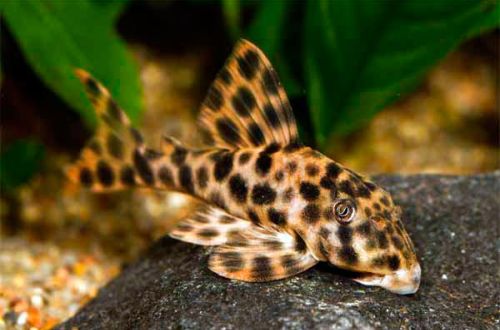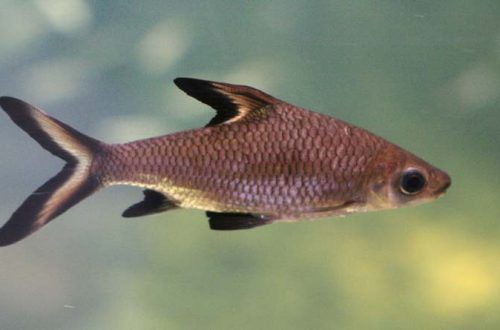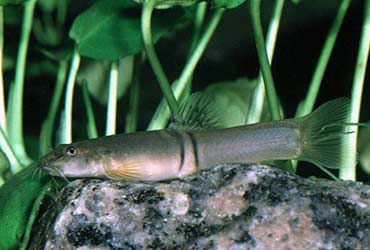
Kuthamangitsani
Pecoltia, scientific name Peckoltia oligospila, belongs to the family Loricariidae (Mail catfish). The fish is named after the German botanist and pharmacist Gustavo Pekkolt, who published a book about the Brazilian flora and fauna of the Amazon region in the early 19th century. This type of catfish is quite widespread in the amateur aquarium, due to its color, ease of maintenance and good compatibility with other freshwater fish.

Zamkatimu
Habitat
It comes from South America from the Tocantins River basin in the Brazilian state of Para. Catfish is found everywhere in various biotopes from swampy reservoirs to flowing sections of rivers. Keeps in the bottom layer, hiding among the snags.
Zambiri mwachidule:
- Kuchuluka kwa aquarium - kuchokera ku 100 malita.
- Kutentha - 24-30 ° C
- Mtengo pH - 5.5-7.5
- Kuuma kwa madzi - 1-15 dGH
- Mtundu wa substrate - iliyonse
- Kuwala - kuchepetsedwa
- Madzi amchere - ayi
- Kusuntha kwamadzi - kopepuka kapena pang'ono
- Kukula kwa nsomba ndi 9-10 cm.
- Chakudya - chakudya chilichonse chomira
- Kutentha - mwamtendere
- Zokhutira zokha kapena pagulu
Kufotokozera
Adults reach a length of 9–10 cm. The catfish has a large, stocky body, especially in females. Males on their background look somewhat slimmer. The coloration consists of dark spots on a gray or yellowish background. The color depends on the specific region of origin of a particular population.
Food
Omnivorous species. The diet should be varied and include dry, frozen and live foods, as well as fresh pieces of green vegetables and fruits. Important – the food should be sinking, the fish will not rise to the surface to feed.
Kusamalira ndi kusamalira, makonzedwe a aquarium
The optimal size of the aquarium for one or two fish starts from 100 liters. The content is quite simple if Pekoltia is in the right environment for her. Favorable conditions are achieved when stable water conditions are established within an acceptable range of temperatures and hydrochemical parameters (pH and dGH), and in the design, the presence of places for shelters is of key importance. Otherwise, the catfish is completely undemanding and can adapt to different environments.
Maintaining high water quality largely depends on the regularity of aquarium maintenance procedures (partial water changes, waste disposal, etc.) and the smooth operation of equipment, primarily the filtration system.
Khalidwe ndi Kugwirizana
Peaceful calm catfish, if it is in the company of species that live in the water column or near the surface. May compete (applies to males) with relatives or other bottom fish for bottom territory if the tank is not large enough.
Kuswana / kuswana
Breeding cases are not uncommon. With the onset of the mating season, males begin to jealously guard their territory and at the same time begin to actively court the female / females. When one of them is ready, the couple retires to a shelter to form masonry. At the end of spawning, the female swims away, and the male remains to protect and take care of the eggs. Parental instincts fade when fry appear.
Nsomba matenda
Chifukwa cha matenda ambiri zosayenera mikhalidwe m'ndende. Malo okhazikika adzakhala chinsinsi cha kusunga bwino. Pakakhala zizindikiro za matendawa, choyamba, ubwino wa madzi uyenera kufufuzidwa ndipo, ngati zopotoka zipezeka, njira ziyenera kuchitidwa kuti zithetse vutoli. Ngati zizindikiro zikupitirira kapena kuwonjezereka, chithandizo chamankhwala chidzafunika. Werengani zambiri za zizindikiro ndi mankhwala mu gawo la Aquarium Fish Diseases.





